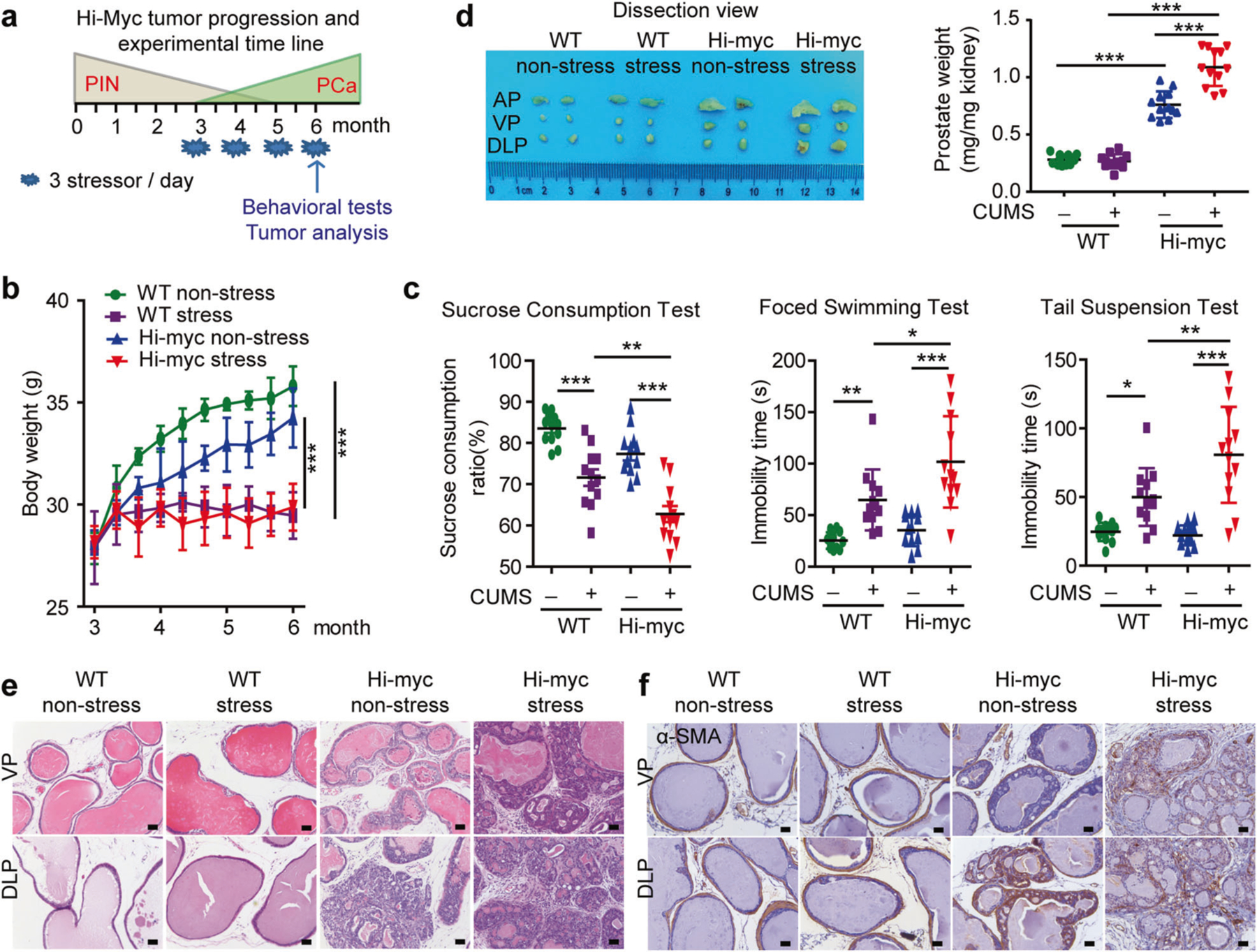Fig. 3.

Depression promotes prostate cancer invasion in Hi-myc mice. a Timeline for Hi-myc mice tumor progression and experimental protocols. 3-month-old wide type (WT) and Hi-myc mice were exposed to chronic unpredictable mild stress (CUMS) for six months, the behavioral monitoring was measured at the end of the experiment, mice were sacrificed when 6-month-old. b Body weight of mice (n = 12). The statistical analysis was based on Two-way ANOVA with Bonferroni posttests (WT non-stress vs WT stress, from month 5 to month 6, ***P < 0.001; Hi-myc non-stress vs Hi-myc stress, from month 4 to month 6, ***P < 0.001). c Behavioral tests at the end of CUMS treatment. Sucrose consumption ratio in the sucrose preference test (n = 12); Immobility time in the forced swimming test (n = 12) and Immobility time in the tail suspension test (n = 12). The statistical analysis was based on One-way ANOVA with Tukey’s post-hoc tests (*P < 0.05; **P < 0.01; ***P < 0.001). d Left: Representative macroscopic images of dissected mouse anterior, ventral, and dorsolateral prostate lobes (AP, VP, and DLP lobes); Right: Wet weight of total prostate was expressed as mg/mg kidney weight (n = 12). The statistical analysis was based on One-way ANOVA with Tukey’s post-hoc tests (***P < 0.001). e H&E staining of AP, VP, and DLP lobes (n = 3). Bar: 50 µm. f Immunohistochemical staining of α-SMA in VP and DLP (n = 3). Bar: 50 µm. WT wild type, PIN prostatic intraepithelial neoplasia, PCa prostate cancer, AP anterior prostate, VP ventral prostate, DLP dorsolateral prostate, stress CUMS, chronic unpredictable mild stress
